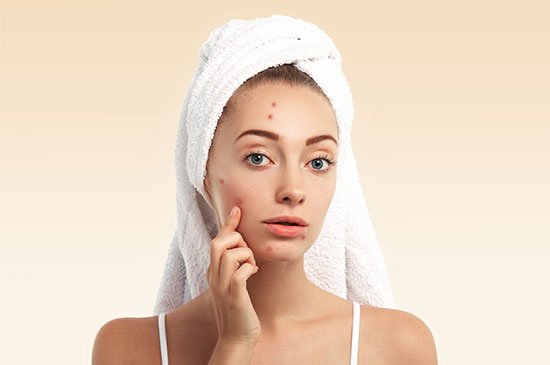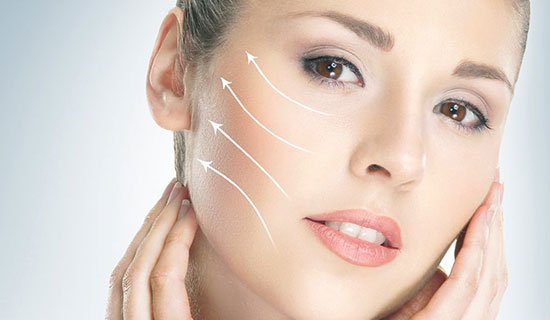

When Is the Right Time to Undergo Treatment for Acne Scars
Are your acne scars a constant source of distress? Dealing with acne itself can be emotionally draining, and the lasting scars it leaves behind can add even more stress.
The encouraging news is that these scars can be treated with the right approach, dedication, and time. However, it’s crucial to understand what acne scars are and their different types before proceeding with the appropriate treatment.

What is Acne Scarring?
Acne scars develop as a consequence of breakouts resulting from clogged skin pores, a combination of dead cells, excess oil, and bacteria. This blockage leads to pore inflammation and, in some cases, breakage in the follicle wall, leading to the formation of visible lesions on the skin.
Shallow lesions are generally less severe and tend to heal more rapidly compared to deep ones. When the follicle wall experiences significant breakage, it increases the likelihood of infected material spilling into the surrounding tissues, resulting in deeper lesions. In response to this damage, your skin attempts to repair itself by generating new collagen fibers. However, these reparations are not as smooth as your original skin, resulting in the appearance of acne scars.
Why Do We Get Acne Scars?
The formation of scars is a natural response by your body when attempting to repair acne. The extent of scarring is determined by how your body reacts to the injury.
Acne scars are a consequence of inflamed acne lesions that penetrate the skin and cause damage to the underlying tissues, resulting in marks or pits.
There are two primary forms of acne scars. One type develops when there is a loss of tissue, creating an indentation on the skin surface. The other form involves raised scars that develop on the skin surface. This raised scar indicates that your skin is effectively performing its normal healing function. During the process of acne healing, your skin produces collagen. Excessive collagen production can lead to the formation of raised scars.
How Long Does It Take for Scars on Your Face to Go Away?
To determine how long it will take for your acne scar to heal, the first step is to identify the type of scar you have. There are four main types: surgical, hypertrophic, atrophic, and keloid scars.
The healing time for each type may vary, with some taking shorter periods while others may require more time to fade for instance, if you have an atrophic scar (resulting from tissue healing without forming collagen), it may take about 6-18 months before most visible signs improve.
On the other hand, a hypertrophic scar (the opposite of atrophic) may take anywhere from 6 months to three years to become less noticeable.
Keloid scars, unfortunately, may never completely fade away, regardless of the duration. However, certain treatments may offer some improvement.
Dealing with acne scars is crucial as they can impact your self-confidence. Without treatment, they may persist for years, and adults with acne scars are more likely to experience anxiety or depression than those without the condition. Seeking appropriate treatment can make a significant difference in your overall well-being and confidence.
Types of Acne Scars
Acne scars can be atrophic (caused by a loss of tissue) or hypertrophic (caused by excess tissue).
- Atrophic Scars
Such scars are shallow, flat depressions that usually heal below the top layer of the skin. Severe cystic acne is the most common cause behind atrophic scars, but there might be other types of acne as well.
These are further segregated into ice pick scars, boxcar scars and rolling scars.
- Ice Pick Scars
Ice pick scars are the result of a severe acne lesion. They usually develop after an infection from cysts that work their way deep into the skin. Ice pick scars are commonly noticed on the cheeks.
These scars are narrower than boxcar and rolling scars. However, they are deeper and more noticeable to the naked eye. Ice pick scars tend to be tough to treat.
- Boxcar scars
Boxcar scars are wider than ice pick scars. They look like round craters or box-like depressions with sharp edges, giving the skin a pitted, uneven appearance. They can be narrow or deep.
Boxcar scars are caused by widespread acne, chickenpox, or varicella. They occur due to inflammatory breakouts that destroy the collagen. This leads to loss of tissue, which creates depressions in the skin. Boxcar scars are common on the lower cheeks, or jaws, where the skin is relatively thick.
- Rolling Scars
As the name suggests, rolling scars are wide with rounded, sloping edges. They make the skin look uneven and irregular.
They are caused by fibrous bands of tissues that develop between the skin and subcutaneous tissue below. The bands pull the epidermis, giving the skin a rolling appearance.
- Hypertrophic Scars
These scars appear as raised lumps of scar tissue. They are the result of excess tissue in the area where the lesion had developed. This happens when scar tissues build up from previous acne spots.
Hypertrophic scars are equal to the size of acne that caused them. They are commonly noticed on the jawline, back, chest, and shoulders. Those with darker skin color are more likely to develop these acne scars.
- Post-Inflammatory Hyperpigmentation
You may notice a dark or discolored patch of skin after your acne heals. This is not a scar but post-inflammatory hyperpigmentation, that happens when your skin is damaged by severe acne or if you’ve picked or squeezed your acne. However, your skin will regain its natural color over time with a good sun protection routine.
Do Scars Get Better With Age?
The impact of aging on acne scars can be a mixed experience. Some types of acne scars, like post-inflammatory hyperpigmentation, may show improvement over time as your skin naturally renews itself and the discoloration fades. However, other types of acne scars, such as depressed or atrophic scars, may not improve with age.
In the case of depressed scars, the aging process can cause the skin to lose collagen, making these scars appear more pronounced over time. Consequently, certain acne scars may appear to worsen as you age, rather than getting better.
It’s important to understand that the response of acne scars to aging can vary from person to person, and individual factors like skin type, genetics, and overall skin health can also play a role in the outcome. Seeking appropriate treatments and skincare routines can help manage and minimize the appearance of acne scars as you age.
Can All Scars Be Treated?
Indeed, improving the appearance of various types of acne scars is a common concern. The good news is that there are effective acne scar treatments available for all types of scarring.
Whether your scars are related to pigmentation issues or you have specific types of scars like enlarged pores, ice pick scars, rolling scars, or boxcar scars, there are suitable acne treatments that can be employed. In some cases, combining different treatments may be beneficial, especially for individuals with multiple types of acne scars, as it can help reduce scarring and enhance the overall appearance of the skin. It’s important to consult with a dermatologist or skincare professional to determine the most suitable treatment plan for your specific acne scars and skin condition.
Acne Scar Treatment Options
So, what are your acne scar treatment options? At Skinbliss Clinic, we offer several treatments that can be used to customize a treatment plan for you so you can feel good about your skin and feel more confident overall. Some of the most common acne treatments we offer for scarring include:
Retinoids
Retinoids serve as both the primary method for managing acne breakouts and one of the initial choices for addressing the appearance of acne scars. These topical treatments are derived from vitamin A and work by accelerating the natural turnover of skin cells, leading to the shedding of affected skin.
In the context of acne treatment, retinoids help regulate oil production and prevent pore blockage. When used to address acne scarring, the increased cellular turnover brought about by retinoids contributes to improving the appearance of enlarged pores and reducing hyperpigmentation. These effects can be beneficial in enhancing the overall texture and tone of the skin affected by acne scars.
Skin Lightening Creams
For individuals whose skin may not be suitable for retinoids, there is an alternative option to improve the appearance of acne scars: skin lightening creams. These creams function similarly to retinoids as they work to exfoliate the skin’s surface, promoting a more even complexion.
Applied daily, skin lightening creams target dark spots and post-inflammatory hyperpigmentation, brightening their appearance. Additionally, some of these creams can also help reduce skin redness, further contributing to an improved overall skin tone and texture.
Microneedling
Microneedling is a conservative yet effective method that addresses both pigmented and textural acne scars. The procedure involves using sterile needles to gently puncture the skin’s surface, stimulating the production of collagen, elastin, and other healing properties that work to enhance the skin’s appearance.
By promoting collagen and elastin production, microneedling can effectively resurface the skin and address textural concerns. This makes it a suitable option for individuals with a combination of scars. For instance, if you have rolling or boxcar scars on the cheeks, along with areas of hyperpigmentation, microneedling can be a beneficial treatment to improve the appearance of these scars over time.
Chemical Peels
Chemical peels are a facial treatment that provides deep exfoliation to the skin, effectively enhancing the appearance of pigmented lesions like acne scars and certain shallow scars. The great advantage of chemical peels is their customization to suit your specific skin type and tone, making them particularly suitable for individuals with sensitive skin.
Depending on the severity of your scar concerns, chemical peels for scarring are usually categorized as light or medium peels. These peels can work wonders in addressing and improving the visibility of your scars.
Dermal Fillers
Dermal fillers are occasionally employed in treating acne scars. These fillers work by augmenting the skin’s volume, which helps to create a smoother texture on the surrounding skin, resulting in a more even appearance. Typically, dermal fillers are reserved for addressing deep scars, such as ice pick scars found on the cheeks or chin. They can be used in combination with various other treatments for enhanced results.
IPL Therapy
IPL therapy has gained popularity as an effective option for diminishing the appearance of post-inflammatory hyperpigmentation and other skin damage associated with acne. Intense pulsed light therapy involves exposing the skin to targeted wavelengths of light, which stimulate faster skin cell turnover and help reduce the visibility of vascular lesions, enlarged pores, and other concerns. For individuals with mild acne scarring related to pigmentation or texture, IPL therapy is often a beneficial choice.
Laser Treatments
Laser treatments employ thermal energy and other energy-based resources, like radiofrequency, to trigger collagen production in the deepest layers of the skin. This increase in collagen helps to create a smoother and more even appearance in the superficial layer of the skin, effectively reducing the visibility of acne scars.
Furthermore, certain laser treatments can also resurface the skin by exfoliating the upper dermal layers, resulting in an improvement in overall skin tone and appearance. For individuals who haven’t achieved desired results with more conservative methods, laser treatments may be a viable final option to address acne scars effectively.
Acne Scar Treatment in Skinbliss Clinic
Eliminating acne scars marks the final step in your journey to recovering from acne. To find a suitable treatment that complements your specific skin type and tone, attending a consultation is essential. During the consultation in Skinbliss Clinic in Hyderabad, a personalized plan for your acne scar treatment will be developed, ensuring the most effective and tailored approach to address your unique needs. Contact Skinbliss Dermatologist in Hyderabad.




Your article helped me a lot, is there any more related content? Thanks!
UID_25252015###
Raih Kemenangan Besar dengan Game Starlight Princess RTP Tinggi
UID_58303021###
Ojol Berhenti Ribut Aksi Demo Berhenti Malah Kompak Main Slot Taruhan Bola di Agentotoplay
UID_39983074###
cuman ada disini untuk mulai main slot demo tergampang dengan bonus besar untuk pemain baru
UID_42425900###
Fedi Nuril Raih Keberuntungan Besar Slot Thailand Jadi Kunci Kesuksesannya Simak Faktanya
UID_13806738###
seorang warga korban banjir di jakarta mendadak mendapat 100 juta dari mahjong ways
UID_24325266###
Sulit Mencari Pekerjaan Budi Menang 120JT Setiap Hari dari Sweet Bonanza x1000
UID_26938665###
Tingkat Kemenangan Sweet Bonanza Mencapai 98 Kini Menjadi Sorotan Para Pemain Di Bulan Puasa Ini
UID_26938665###
Tingkat Kemenangan Sweet Bonanza Mencapai 98 Kini Menjadi Sorotan Para Pemain Di Bulan Puasa Ini
Your point of view caught my eye and was very interesting. Thanks. I have a question for you.
UID_73970878###
test
UID_99106393###
test
UID_72797786###
test
UID_81506936###
test
UID_41668909###
test
UID_37989802###
test
UID_65861860###
mama yu kero
UID_72855391###
mama yu kero
UID_35301416###
mama yu kero
UID_35301416###
mama yu kero
UID_67309952###
test
UID_49955036###
test
UID_98600946###
test
UID_45806261###
test
UID_94786424###
test
UID_89943294###
test
UID_80031861###
test
UID_20157402###
test
UID_89647609###
test
UID_42917877###
test
UID_41684275###
test
UID_87800967###
test
UID_27352550###
test
UID_54855570###
test
UID_34729699###
test
UID_65636518###
test
UID_55404481###
test
UID_98113733###
test
UID_20470092###
test
UID_17403452###
test
UID_98699887###
test
UID_98699887###
test
UID_24317201###
test
UID_93537352###
penipu online
UID_96318461###
scam site
UID_75004935###
bokep
I have read so many content regarding the blogger lovers but this paragraph is really a fastidious article, keep it up.
UID_35347853###
test
UID_55474042###
test
Can you be more specific about the content of your article? After reading it, I still have some doubts. Hope you can help me.
UID_72323261###
agentotoplay
UID_66514506###
agentotoplay
UID_17107209###
agentotoplay
UID_67580950###
agentotoplay
skinblissclinics.com
skinblissclinics.com
Blair Eaton
Pingback: blazing crown deluxe
UID_14314817###
da pa checker